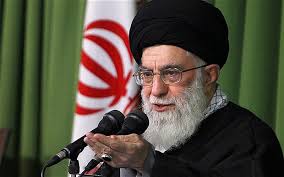UN climate propaganda at full throttle
By Tom Harris and Tim Ball
“Mega-droughts and deadly heatwaves. A year’s rainfall in a month.
Coastal cities under water. Destruction of ocean life. Invasive pests.”
This is how the United Nations’ World Meteorological Organization (WMO)
describes “weather reports from the future”, a series of films depicting
what they claim are realistic scenarios for the year 2050.
Working with television weather presenters and national broadcasters
from around the world, the WMO is releasing 14 imaginary future weather
reports this month designed to influence the UN’s Climate Summit 2014 to
be held in New York City on September 23.
The films “paint a compelling picture of what life could be like on a
warmer planet,” says WMO Secretary-General Michel Jarraud. “Climate
change is already leading to more extreme weather such as intense heat
and rain…We need to act now.”
But neither the WMO films nor Jarraud’s statement make any sense. They
are based on the findings of the UN’s Intergovernmental Panel on Climate
Change (IPCC), an agency that has been wrong on every single forecast
they have ever made. So like most of the climate debate, the WMO
initiative is not science. It is propaganda designed to push political
leaders into committing their countries to a binding greenhouse gas
reduction treaty at next year’s Climate Change Conference in Paris.
Science tells us that if the world warms due to increasing greenhouse
gas emissions, an improbable proposition, temperatures at high latitudes
are forecast to rise the most, reducing the difference between arctic
and tropical temperatures. Since this differential drives weather, we
should see weaker midlatitude cyclones in a warmer world and so less
extremes in weather, not more.
The lack of a global warming/extreme weather connection is one of the
few areas of agreement between the IPCC and the Nongovernmental
International Panel on Climate Change (NIPCC).
The IPCC wrote in their March 28, 2012 Special Report on Extremes,
“There is medium evidence and high agreement that long-term trends in
normalized losses [due to extreme weather] have not been attributed to
natural or anthropogenic climate change.” In their September 27, 2013
Fifth Assessment Report the IPCC had only “low confidence” that
“damaging increases will occur in either drought or tropical cyclone
activity” as a result of global warming.
The NIPCC report released on September 17, 2013 concluded the same,
asserting that “In no case has a convincing relationship been
established between warming over the past 100 years and increases in any
of these extreme events.” The NIPCC even went so far as to say, “There
has been no significant increase in either the frequency or intensity of
stormy weather in the modern era.”
For example, the number of tropical cyclones making landfall in the
Philippines has not changed significantly over the past century. And it
has been almost nine years since the last major hurricane struck the US
Mainland, the longest drought in the hurricane record since 1900.
Despite predictions that the 2013 hurricane season (Jun 1 – Nov 30)
would be more active than usual, it was one of the weakest since
record-keeping began about 50 years ago. The 2014 season is also showing
less activity than normal. The US National Hurricane Center stated on
September 1, “For the North Atlantic, Caribbean Sea and the Gulf of
Mexico, activity in the basin so far in 2014 has been about 45% of the
1981-2010 average.”
Of course, none of this was supposed to happen according to the computer
models on which the climate scare is founded.
The San Francisco-based Climate Policy Initiative has demonstrated that
worldwide spending on climate finance now totals almost $1 billion per
day. Tragically, only 6% of this goes to helping people adapt to real
climate change today, however caused. The rest is wasted trying to
control what might happen in the distant future.
Christiana Figueres, Executive Secretary of the UN Framework Convention
on Climate Change, thanked the television weather presenters “for
volunteering their time and their skill to communicate to millions of
people the reality we are all facing by 2050 if climate change is left
unaddressed. I am sure their films will inspire everyone of the absolute
necessity of a meaningful, universal new agreement in Paris in 2015.”
The only climate agreement required is one that helps our most
vulnerable citizens adapt to climate change, most of which is
undoubtedly natural. Allocating more importance to the unpredictable
problems of people yet to be born than the serious issues faced by those
suffering today is immoral.
______________________
Tom Harris is Executive Director of the Ottawa-based International
Climate Science Coalition. Dr Tim Ball is an environmental consultant
and former climatology professor at the University of Winnipeg.





